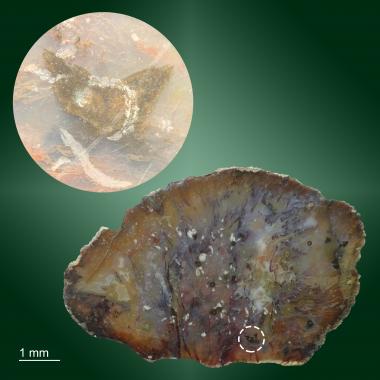
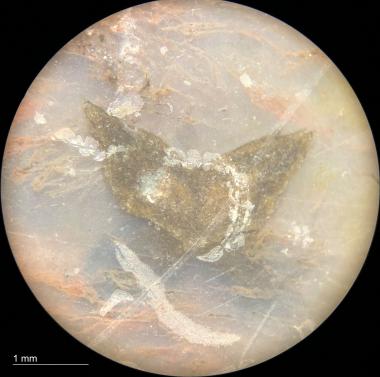
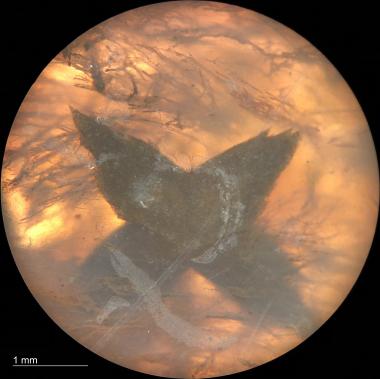
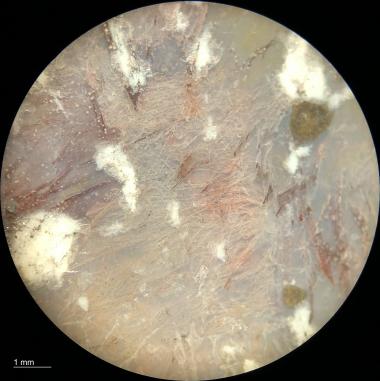
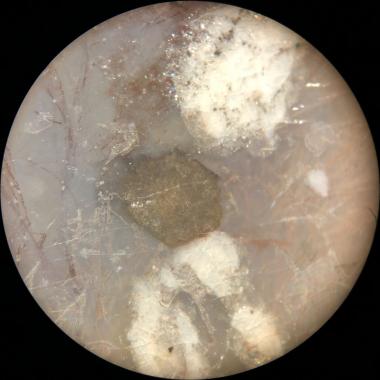
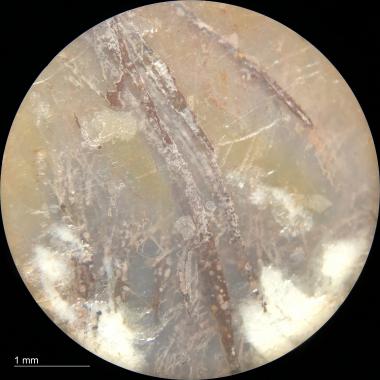
Not much is known about the origin of this siliceous coprolite slab. It is significant because of the clearly visible vegetable matter inclusions. The dark spots visible in this photo are cross sections through undigested stems. Other thin, partially digested, fibrous plant material can also be see under magnification. Some of the plant inclusion resemble (but don't exactly match) what I've seen in modern horsetail plants.
IMPORTANT: When it comes to coprolites, it is extremely important to know where they came from. Now, I'm not talking about what creatures produced them. At this point in time, scientific study can usually only reveal what was eaten. What I am referring to is the geographic and geologic location in which it was found. Armed with that information, we can make educated guesses as to both predator and prey, or in this case, vegetarian and salad fixings. Seriously, without this information coprolites, as well as other fossils, lose their scientific value. I can only assume the person who cut this stone realized they had something very special. It was cut into a thin (3mm) slab and polished on both sides, allowing us to clearly see the plant inclusions. It was purchased at a rock shop in Nebraska, as a coprolite, by the person who sold it to me. I see many, many cut slabs and rocks that are sold as coprolites both online and in rock shops. the majority of these are just pretty rocks. I implore all who read this to record as much information as possible about any potential coprolites or fossils you find or purchase. Document the location found, including the geologic formation if known. Also note things like the type of soil (sandy, clay, shale, etc.) and other other fossils present in the immediate vicinity. If it is something you've found, take a photo of your find and the area you found it. Make sure there is something in the photo that can be easily measured to provide scale. If you decide to cut a rock to verify it is a coprolite, take good quality photos with a scale (metric preferred) from all angles first. That way if you really do have a coprolite and find something extraordinary, we can all learn from it. It is important to remember that coprolites are like little field jackets. The inclusions they contain are often items that would not have otherwise survived the fossilization process.
If you recognize this slab and have any information about it's origin, please contact me.
